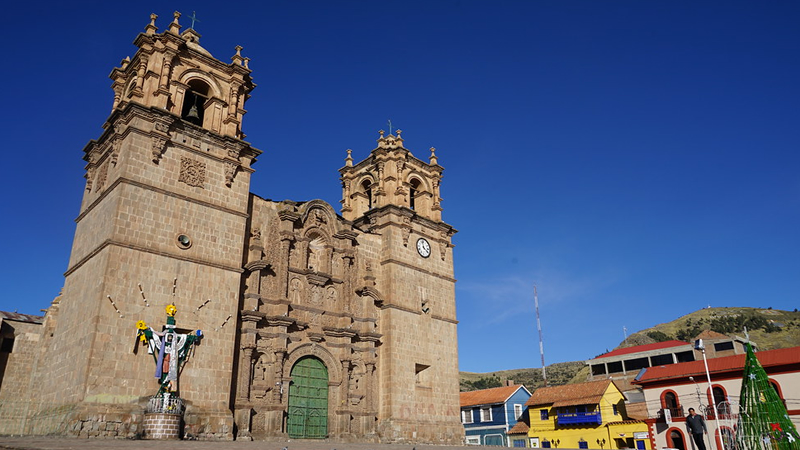PUCARA INFORMATION
Tourist Attractions

It is located on the Collao plateau, the highest in the Andes of South America. It has a flat relief, at an altitude of almost 4,000 meters above sea level. It limits the north with Madre de Dios; to the east with Bolivia; to the south with Tacna; to the west with Moquegua, Arequipa and Cusco. Its appearance is that of an immense plain covered with pastures or grasslands, in whose horizon some snowfalls emerge.
The Department of Puno is made up of the following provinces: Puno, Azángaro, Carabaya, Chucuito, El Collao, Huancané, Lampa, Melgar, Moho, San Antonio de Putina, San Román, Sandia, Yunguyo. It is important to bear in mind that the maximum height to get to Puno from Cusco, La raya altitude is 4 335 m.a.s.l.
The city of Puno is cold and semi-dry. The rainy season starts in October and ends in April. The maximum annual average temperature is 14.4 ° C (57.9ºF) and the minimum 2.6 ° C (36.7ºF).
The typical dishes of the Department of Puno are the chairo, soup made of lamb meat; fricasé, made with pork and mote (boiled large corn) which is recommended to eat when it is very hot; thimpo, dish made of lamb or carachi fish (of the species orestia spp), and the very nutritious fish, with quinoa, cheese and eggs.
Peru, as we know, has a number of provinces and cities, all very attractive to tourists, and different from each other like Cusco Tourist Information. Today we will travel to one of the southernmost areas of the country, the Department of Puno, a province that amazes travelers for its charming and delicious folklore, a place that seems to have been extracted from some Inca fable, where tradition of its people is artistically represented in hundreds of different types of dances that can be observed today in their Puno festivities.
These types of celebrations are regularly held throughout the year, and almost all of them present religious themes, full of a Christian colonial past that is mixed with indigenous traditions. In this way, the festivities of Puno pay homage to both the Holy images of the Christian religion and the gods of the Inca era.
Although it is known that Puno has more than 350 registered dances, its musical expressions are distributed in several types, here we will give you a short list of the best known dances in the department of Puno.
We can define the native or native dances where the farmers stand out; Llameritos or the dance of the breeders of llamas, who dance simulating the passage of these Andean auquénidos; Carnival of Capullani; Pinquilladas; Sicuris, a ceremonial dance of origin of the Inca era very danced by the Aymara; Vicuñitas, Unu Cajas, Mallku Condoriri, known as the seated condor dance, among many others.
We also have the dance of costumes of lights, very beautiful and colorful by the way; where the brunettes or dance of the brunettes stand out, which has hundreds of years in force and remains one of the most popular and colorful; and the famous the devils, the same name says it is a dance that interprets the Andean malefic being, the devil.
It is a religious dance, beautiful, where a choreographic show is recreated, considered a ballet by the people because of the number of performers, the colorful dress and the perfection in their choreographies.
In case you did not know, Puno, in addition to its typical dances has a lot to offer so you can enjoy a full and satisfying trip. For example, we can visit the largest navigable lake in the world, the Titicaca, Pucara, it is land of artisans where we can find the taditional Bulls of Pucara Puno, visit ruins of the Tiahuanaco culture that settled in the area thousands of years ago, tour the varied highlands or attend the most famous popular festival of all, which today in day it is recognized as cultural heritage of Peru, the Virgin of the Candelaria, which is celebrated in the month of February.